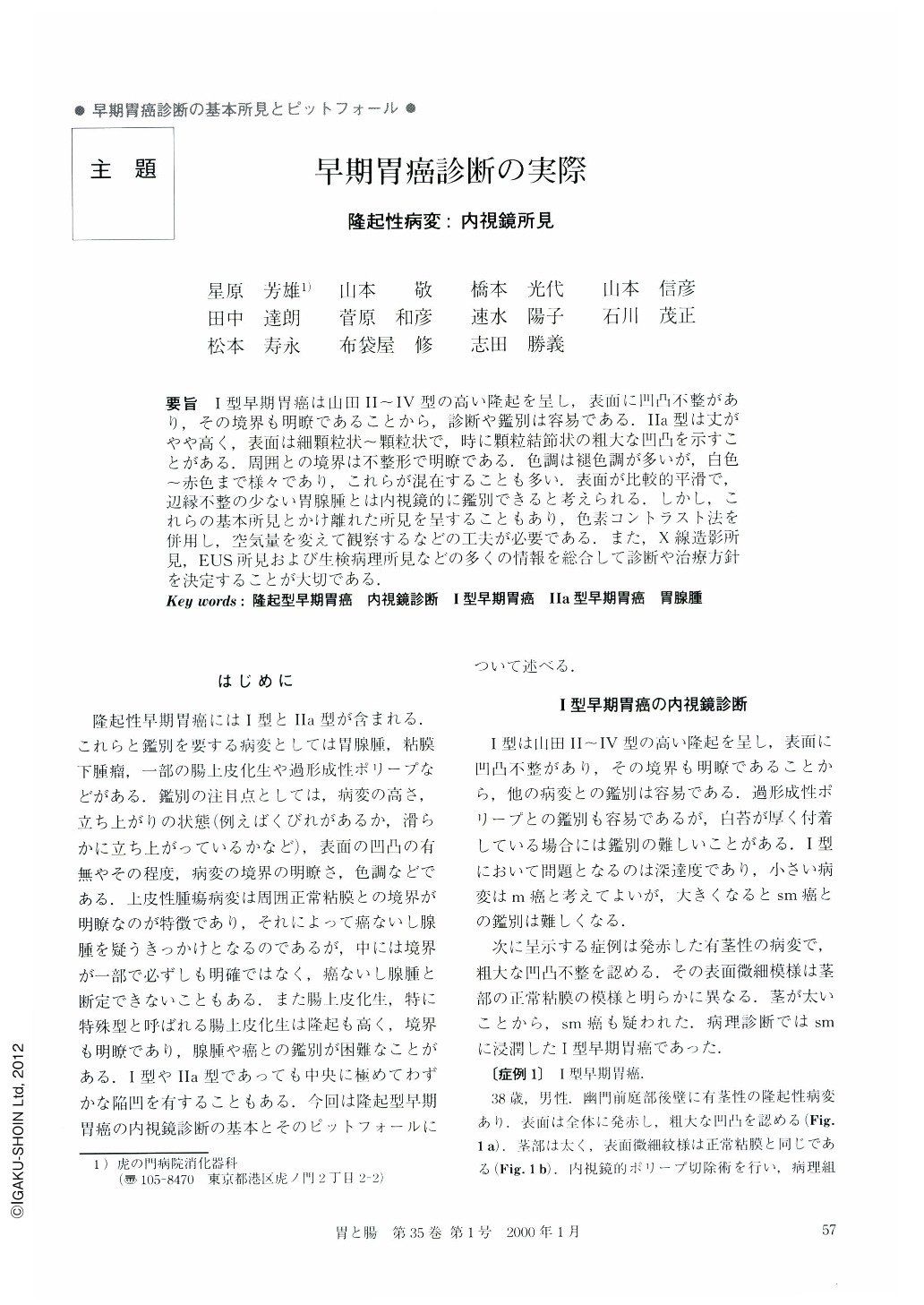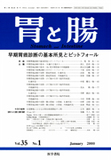Japanese
English
- 有料閲覧
- Abstract 文献概要
- 1ページ目 Look Inside
- サイト内被引用 Cited by
要旨 I型早期胃癌は山田Ⅱ~Ⅳ型の高い隆起を呈し,表面に凹凸不整があり,その境界も明瞭であることから,診断や鑑別は容易である.Ⅱa型は丈がやや高く,表面は細顆粒状~顆粒状で,時に顆粒結節状の粗大な凹凸を示すことがある.周囲との境界は不整形で明瞭である.色調は褪色調が多いが,白色~赤色まで様々であり,これらが混在することも多い.表面が比較的平滑で,辺縁不整の少ない胃腺腫とは内視鏡的に鑑別できると考えられる.しかし,これらの基本所見とかけ離れた所見を呈することもあり,色素コントラスト法を併用し,空気量を変えて観察するなどの工夫が必要である.また,X線造影所見,EUS所見および生検病理所見などの多くの情報を総合して診断や治療方針を決定することが大切である.
In a typical case, type I early gastric carcinoma is a high elevated lesion with an uneven granular surface and an irregular well-demarcated margin, and type Ⅱa early gastric carcinoma is a slightly high elevated lesion with a regular fine-granular or granular surface and an irregular, well-demarcated margin. Its color is mostly pale white or grayish white, but, in some cases it is partially reddish. These findings distinguish type Ⅱa carcinoma from gastric adenomas.
Because some elevated type carcinomas and adenomas do not show typical findings, it facilitates correct diagnosis to change the amount of air and to use the indigo carmine dye contrast method during endoscopy.
Also, x-ray findings, endoscopic ultrasonography and histological findings of biopsy specimens are necessary for making a definite diagnosis of an elevated lesion and deciding on its treatment.

Copyright © 2000, Igaku-Shoin Ltd. All rights reserved.


